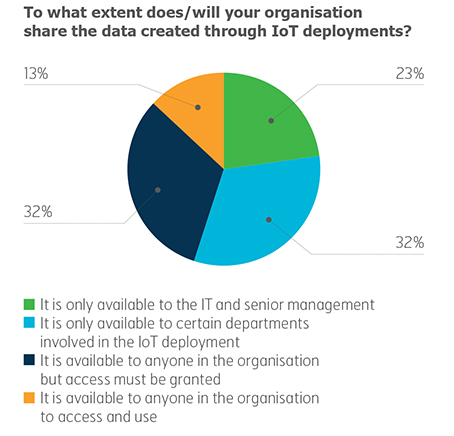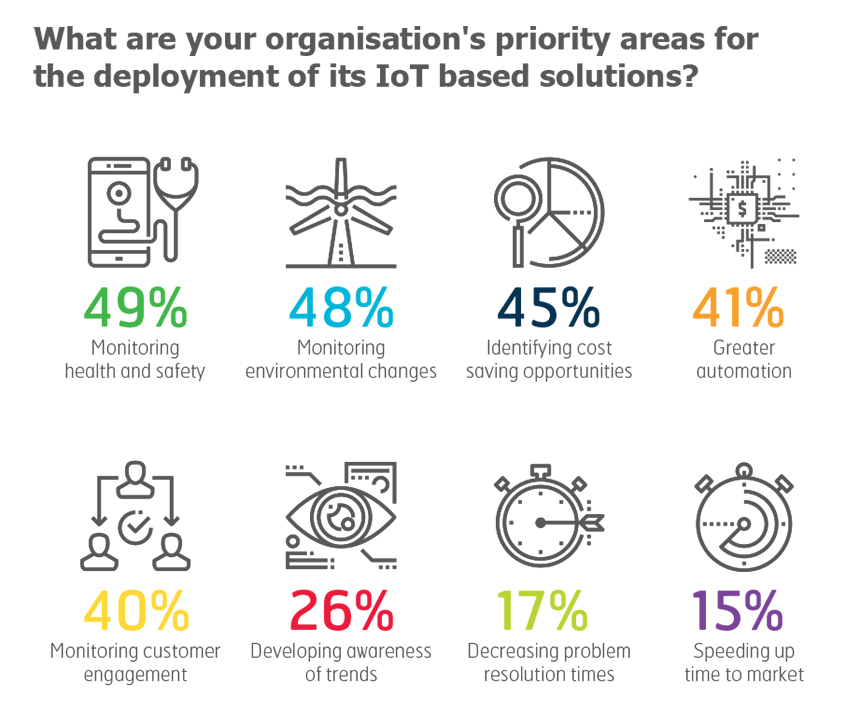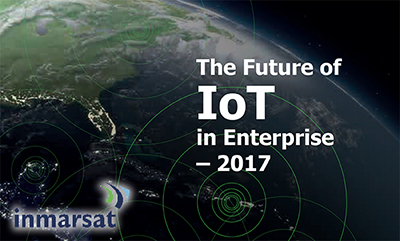As the Mobile World Congress Americas convenes in San Francisco today, an important new study on the Internet of Things (IoT) by Inmarsat has surfaced.
As reported here recently, IoT promises to completely transform the transportation industry, making it possible to track the location and state of goods as they move across the planet, gather real-time data on a wide variety of variables including engine status and emissions levels, and drive the development of innovative technologies such as autonomous vehicles.
But while transportation organizations recognize the potential of IoT to make them more efficient and profitable, new research from Inmarsat, the global mobile satellite communications provider, has revealed that many lack the skills and data-sharing processes to fully exploit the technology. Unless these shortfalls are addressed, transportation businesses may be limiting the scope of their transformations.
In May 2017 market research specialist Vanson Bourne interviewed respondents from 100 large transport companies across the globe for Inmarsat's “The Future of IoT in Enterprise – 2017” report, which found that organizations from the sector have high hopes for the data generated by their IoT solutions. Around half will use it to monitor environmental changes (54 per cent) and speed up their time to market (48 per cent), 44 per cent will use it to better manage their assets, and 28 per cent will use it to monitor and improve health and safety.
 However, the report also identified a number of challenges that transportation businesses must overcome to unlock the full value of IoT-generated data, with many lacking the skills and processes needed to do so. 40 per cent stated that they would need additional analytical/data science skills to successfully deliver IoT and in over half (55 per cent) of cases data gathered through IoT solutions was not shared throughout the organization, and is restricted to departments directly related to IoT development and deployment.
However, the report also identified a number of challenges that transportation businesses must overcome to unlock the full value of IoT-generated data, with many lacking the skills and processes needed to do so. 40 per cent stated that they would need additional analytical/data science skills to successfully deliver IoT and in over half (55 per cent) of cases data gathered through IoT solutions was not shared throughout the organization, and is restricted to departments directly related to IoT development and deployment.
“The transport sector stands to be one of the primary beneficiaries from the windfall of data coming its way from IoT. Digital exhaust, the data generated by people's online actions, can be an important source of intelligence for transport companies, and as rollout of Wi-Fi on planes, trains and other public places continues, evermore data sets will become available,” says Mike Holdsworth, Director of Transport at Inmarsat Enterprise.”
Furthermore, he says, data generated by sensors placed on cargo, vehicles, employees and places, has the potential to fuel a revolution in the sector.

“But while the industry has long leveraged passenger data to dynamically manage routing and calculate fuel requirements, many of our transport respondents haven't yet mastered their approach to the data generated by connected things.”
According to Holdsworth, experimentation and innovation with IoT can only ignite when the right people can see the data generated by sensors and apply it to their specific challenges. However, in half of cases in the transport sector, access to IoT data is restricted to departments directly related to the deployment.
This is a missed opportunity and suggests that many transport companies may be limiting the scope of their transformations.
“IoT is the driving force behind digital transformation in the sector and the technology will play an increasingly important role in helping transportation and logistics companies achieve a competitive advantage,” he adds.
Working with its partners, Inmarsat is seeking to deliver effective solutions for fleet management across road and rail platforms globally.
You can read the full report here.
SC
MR


More IoT
- Tips for CIOs to overcome technology talent acquisition troubles
- Maximizing Return on Innovation Investment: 6 Ingredients for Success
- Global IoT spend by logistics market to top $114 billion by 2032
- Industrial IoT market to reach $1.3 trillion by 2032
- Security and privacy concerns prevent effective use of IoT data
- Gaining Crucial Business Insights Through Supply Chain IoT
- More IoT
Latest Resources

 Explore
Explore
Software & Technology News
- AI, virtual reality is bringing experiential learning into the modern age
- Humanoid robots’ place in an intralogistics smart robot strategy
- Tips for CIOs to overcome technology talent acquisition troubles
- Game on: Rethinking change management for the digital era
- Predicting stockouts: Enhancing FMCG resilience through data-driven insights
- Top Performers Investing in, Benefitting from AI
- More Software & Technology
Latest Software & Technology Resources

Subscribe

Supply Chain Management Review delivers the best industry content.

Editors’ Picks





